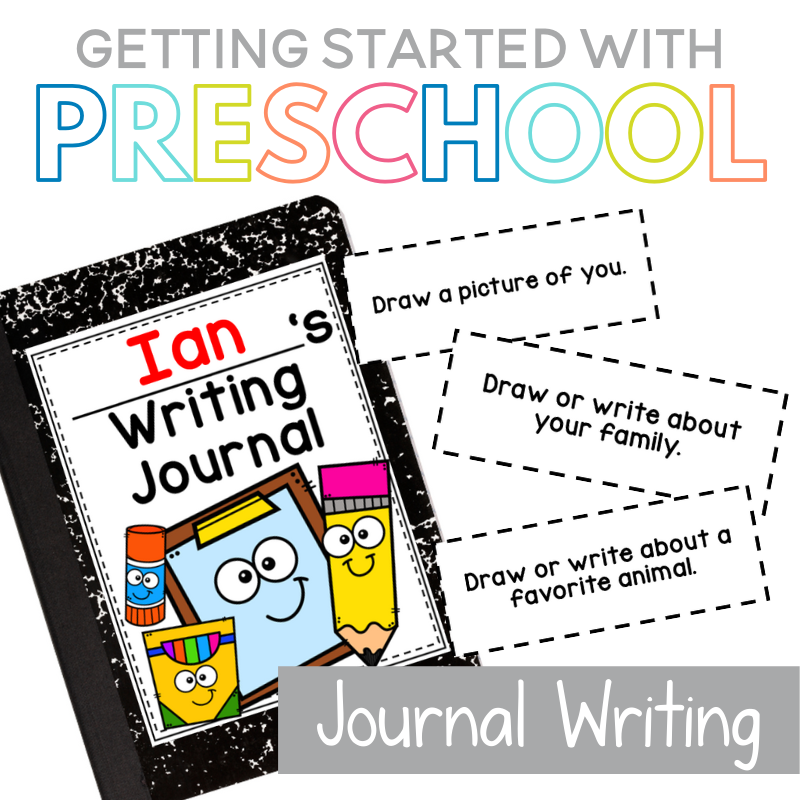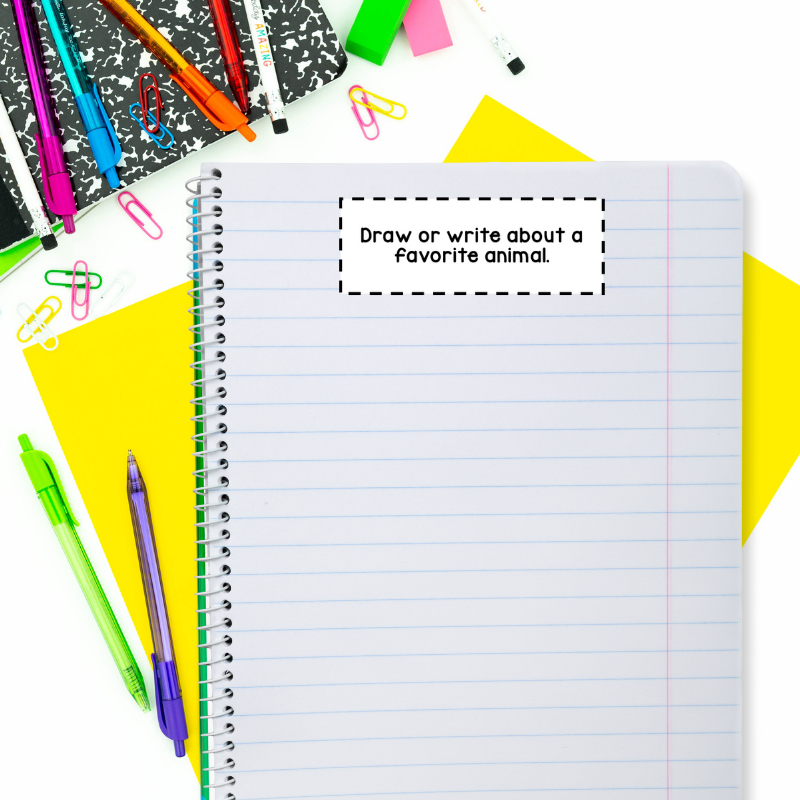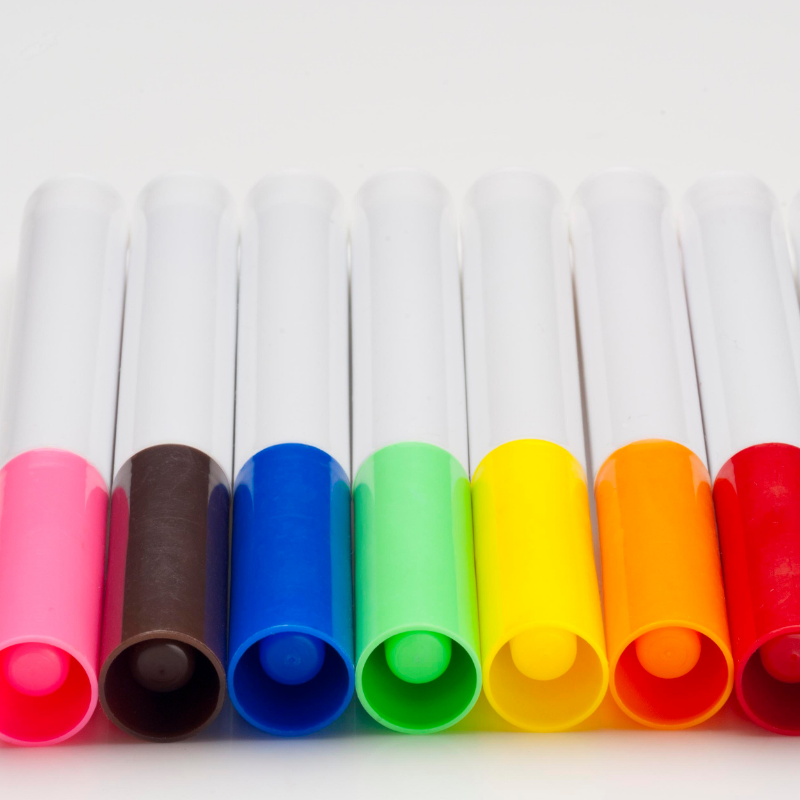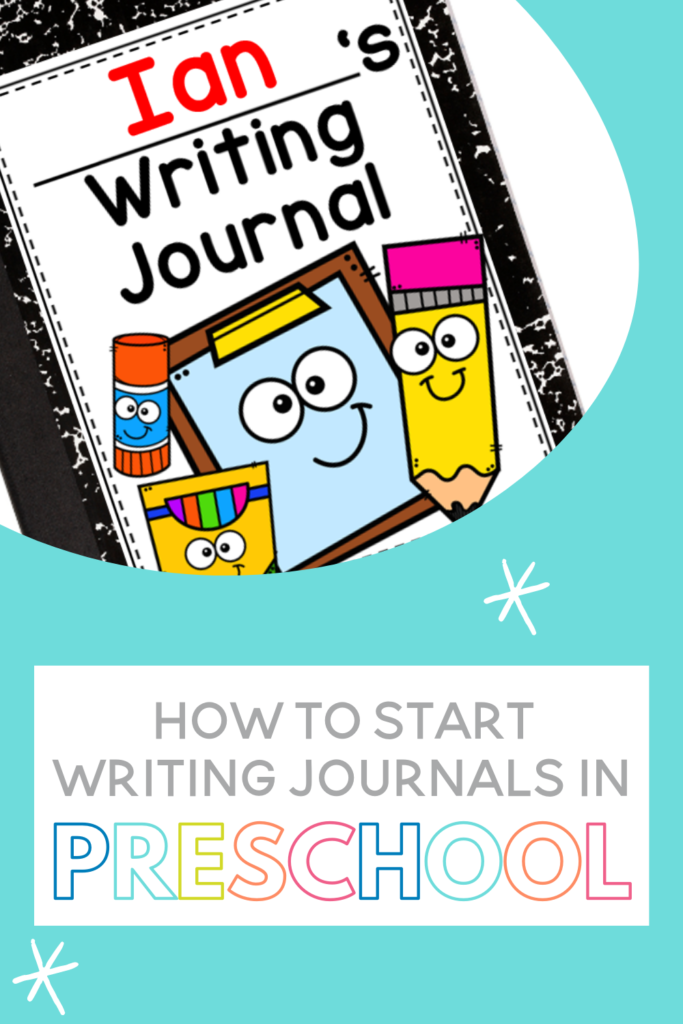Preschool writing journals can be a great way to get your little ones started with writing! This post will walk you through the basics.
I think that one of the hardest things about teaching younger grades is the responsibility of teaching it all. Math, science, reading, writing, social studies, it’s all on you! Honestly, the only way you are going to be able to teach everything you need to is by integrating subjects. That’s one of the reasons I love teaching writing so much. It’s such an easy way to hit multiple skills and subject areas! Preschool writing journals are a great way to practice writing and easily integrate other concepts too!
Before we get started, class books are one of my favorite tools for writing workshop time. They really help preschool and Kindergarten students get excited about learning to read and write. I’ve put together a set of my favorite printable class books totally free for you! These class books can be used throughout the school year and focus on skills like letter and number recognition, sight words, environmental print, and more! I know you’ll love writing and creating these books with your students!
Preschool Writing
Not too long ago I came across my Kindergarten journal in a bucket of keepsakes my mom had saved. I had so much fun looking through it and laughing at my pictures and writing. I actually think I remember writing some of the pages in it and I got a kick out of my illustrations. Journaling with young children isn’t anything new, but it’s definitely beneficial and stil important in today’s classrooms. This post is going to cover some of the basics for getting started with preschool writing journals.
This post may contain affiliate links. For more information, you can read my disclosure statement here.
What does writing in Pre-K look like?
I think it’s important to start with developmentally appropriate expectations of how writing in the preschool classroom should look. If you are interested in learning more about this topic, I highly recommend this book. Writing is a form of communication and follows a progression of skills. In preschool, it’s important to help students be able to tell their stories by talking, then move into drawing and writing.
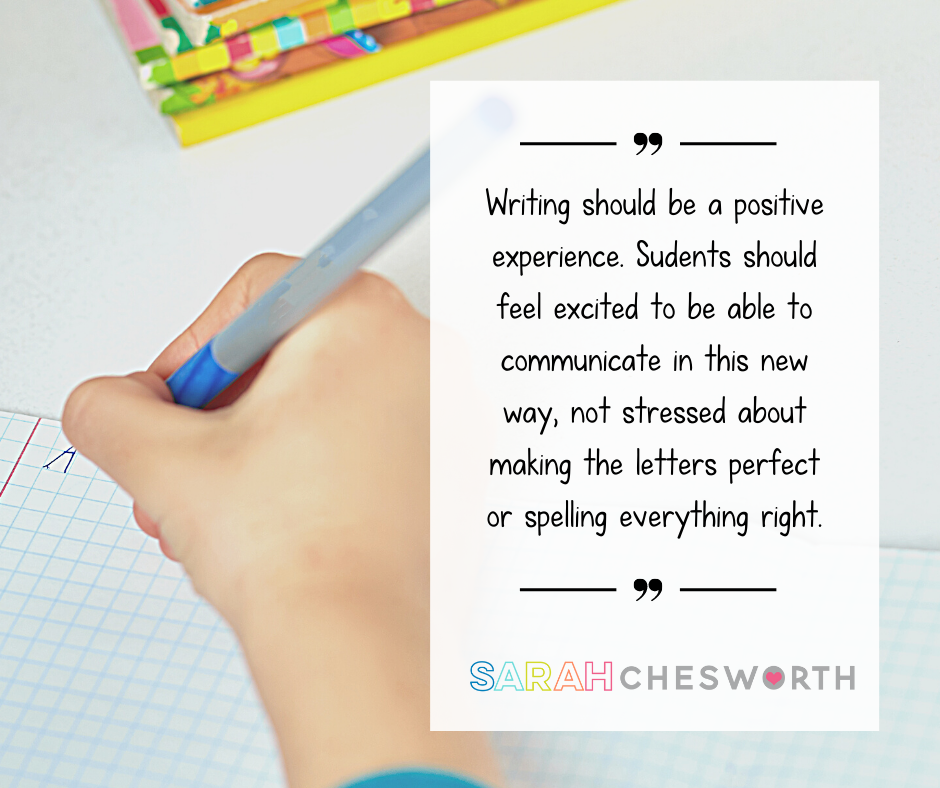
Writing should be a positive experience. Students should feel excited to be able to communicate in this new way, not stressed about making the letters perfect or spelling everything right..
As you know, abilities at this age can vary so much! You will have students who are ready to write and others still developing the pre-writing skills necessary.
What type of writing paper should preschoolers use?
You will see different types of paper used by young writers. I believe it’s best for children to begin writing on unlined, plain white paper. When little ones are first learning to write, they are having to focus so much on forming the letters that having any lines on the paper can be distracting. We also want children to write a specific message rather than just trying to fill up the lines.
I also recommend having children use a dark-colored marker for writing rather than a pencil at first. It’s easier to hold and control, plus doesn’t have as much drag as a pencil. You also don’t have to worry about it breaking with pressure.
Usually closer to Kindergarten age, little ones are ready to start writing on lined paper. By lined paper, I don’t mean notebook paper. I mean just a simple line or two on a piece of paper with enough space for them to write. I usually start the transition by writing enough blanks for the message they want to say. For example, if a child wanted to write, “I like apples.” I would write three blanks for their three words.
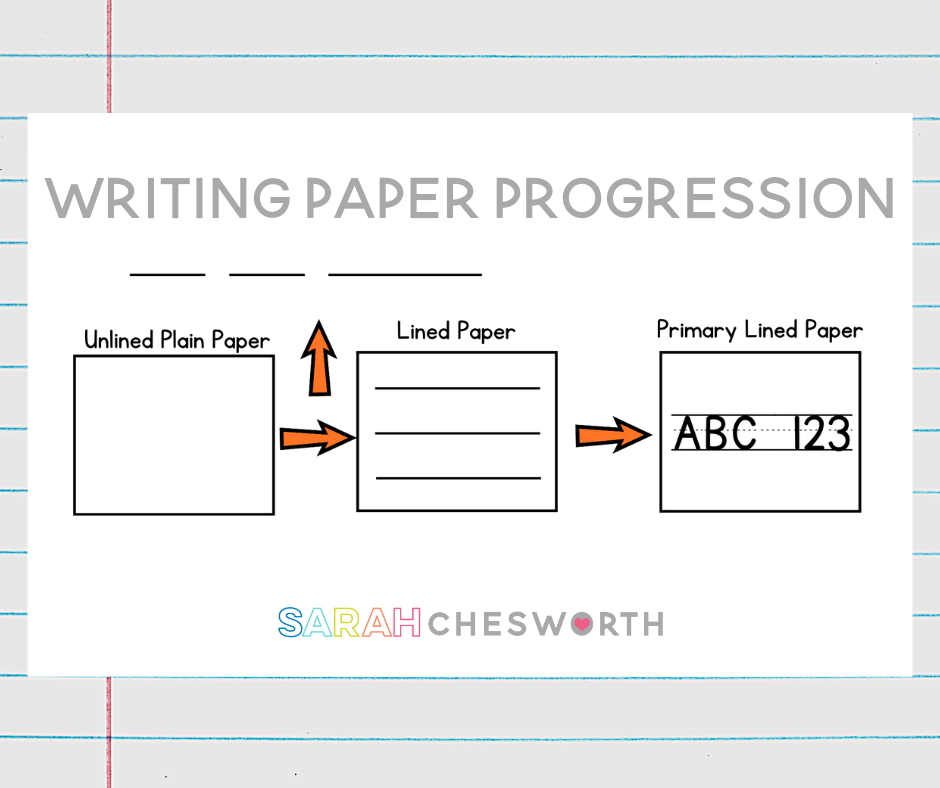
After students have a really solid grasp on writing all of the uppercase and lowercase letters, they are usually ready for primary lined paper. You will usually start seeing this type of writing paper closer to first grade. This paper helps children to make their letters the correct size and focus on correct letter formation.
For preschool students, I recommend sticking to unlined and lined paper to start with. Or if the paper they are using has lines (like a spiral notebook or composition book); don’t require them to use those lines for writing. They are way too small for them at this age.
Setting up Preschool Writing Journals
There are a few different ways to put together writing journals in preschool. Here are a few of the most common ways:
- Pieces of paper stapled together often times teachers will do journals like this for every month of the school year or to match themes, etc.
- Spiral Journals or composition books: This can be a great option, especially to save time, space and paper! Students can keep their place in the journal using a binder clip or even a piece of ribbon hot glued to the back cover
- Individual pieces of paper hole punched and put in a binder or folder to create a writing portfolio. This serves as a really great keepsake at the end of the school year! Or you can always send home the individual writing pages as students complete them through the school year
One more thing! No matter how you choose to set up writing journals for your students, you need a date stamp. You need one. As the year goes on, some students may be ready to write the date on each journal entry. That’s great, but at the beginning of the year, your little ones don’t need to be stressing about how to write the word July or the numbers in the date. Let them use that energy to focus on their actual writing and what they want to share with the world.
All of these can be great ways to create writing journals for your preschool students! It just comes down to your preference as a teacher, what supplies your students are bringing, etc.
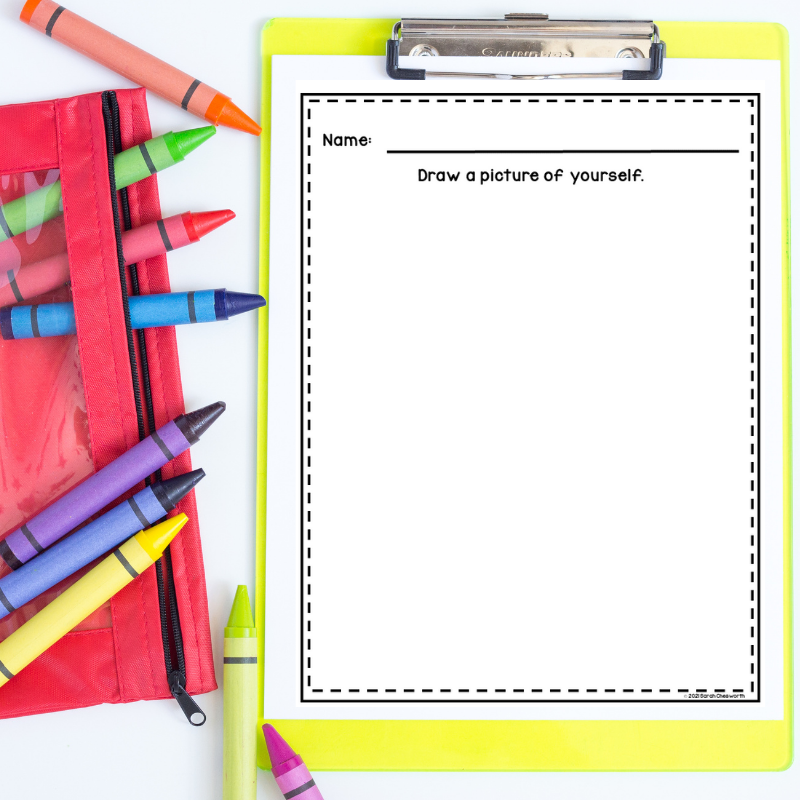
Preschool Writing Journal Prompts
Now the fun part, let’s get your students writing! I find that giving some guidance and ideas for writing using prompts helps young writers. Even when I taught first grade, some students really struggled with coming up with a writing idea. Prompts can really help with that, plus it’s easy to integrate writing with other concepts your students are learning. The ideas for journal prompts are endless! Prompts can be as simple as: Write about your weekend. Or they can be creative: What would you do if you were a butterfly? Or they can be tied to learning in another subject area: Write a fact about the moon. I could go on, and on; but you get the picture!
With any journal prompt that you choose, it’s important to ensure that all students will be successful. At this age I think any journal prompt should include an option for drawing as well as writing. For example, maybe in the fall, your class will be studying pumpkins. Your journal writing prompt could be this: Draw or write about pumpkins. Here are a few things your students may respond with:
- One student may draw an orange scribble.
- Another student may draw a pumpkin.
- Another student way draw a pumpkin and write a P to go with it.
- Another student may be able to write a complete sentence about pumpkins!
All of these students are successful and you will be able to document their writing progress throughout the school year through their writing journals!
If you are looking for prompts like this specifically for preschool students be sure to check out, Preschool Journal Writing Prompts for the Entire Year! These prompts are aligned with the Circle Pre-K Curriculum but can be used by any preschool classroom. They are organized into ten different themes that are popular for preschool (or kindergarten students!):
- Welcome to Pre-K
- I’m Me! I’m Special!
- All Around My Community
- It’s Harvest Time
- The Sky Above Me
- Animals All Around Me
- I’m Healthy! I’m Safe!
- Get Moving
- The Earth Around Me
- Creepy Crawly Critters
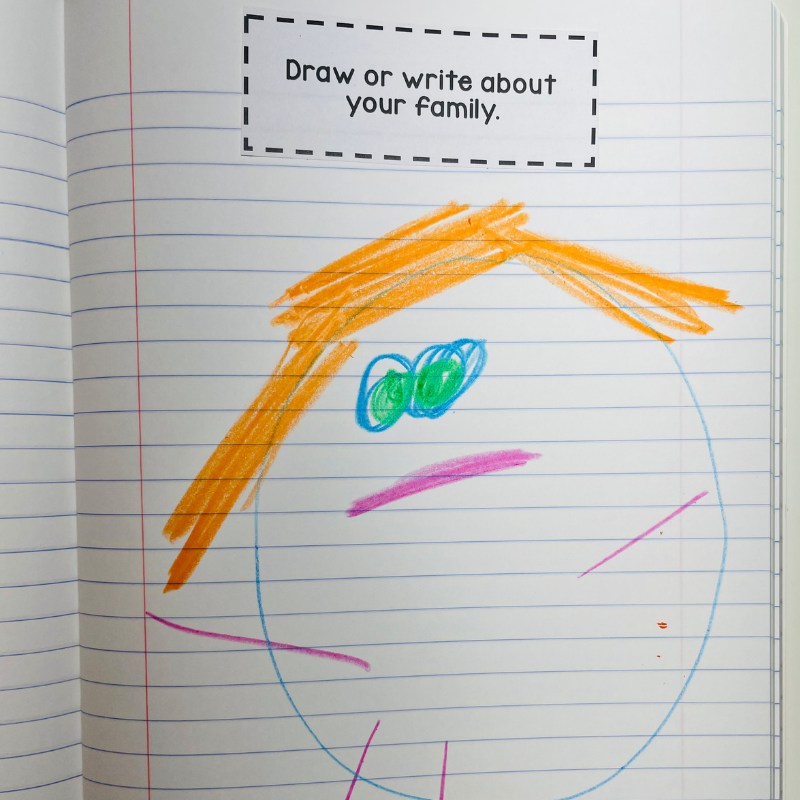
All of the included prompts can be cut and glued inside a journal or printed on a piece of regular computer paper depending on what types of journals you have chosen for your students. They are simple and will save you tons of time thinking of journal writing prompts for the whole year. Seriously, just print and go!
More Tips and Resources for Writing in Preschool
Environmental Print in the Preschool Classroom
How to Make Meaningful Class Books for Preschoolers
Preschool First Day Activities to Set Your Year up for Success
Don’t forget to download your set of free printable class books and start writing and reading with your students! They are focused on the skills preschoolers and Kindergarten students need to know like numbers and letter recognition! If you want to learn more about class books check out this post, How to Make Meaningful Class Books with Preschool and Kindergarten Students.
I hope this post gave you the confidence to give preschool writing journals a try with your pre-k students this school year!

